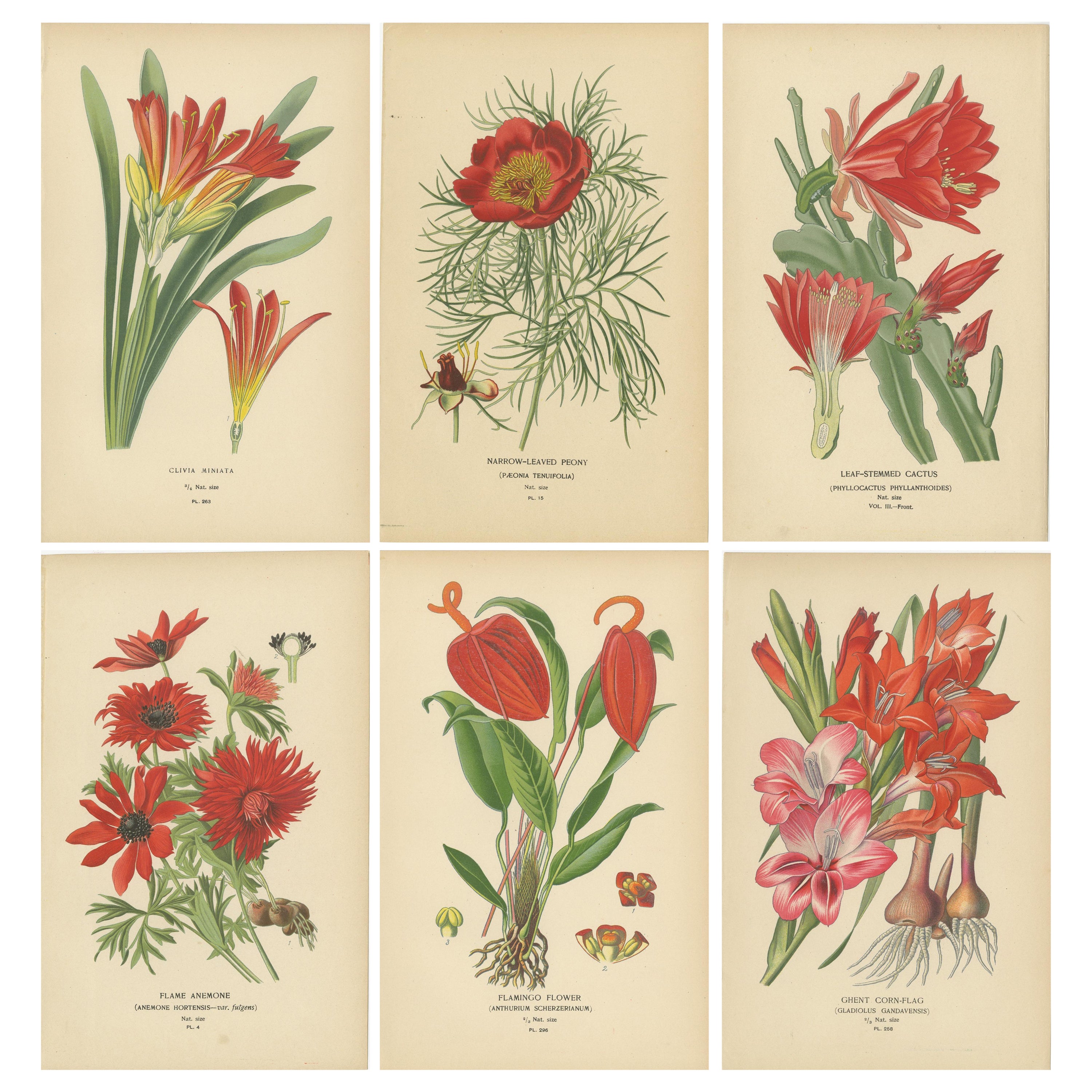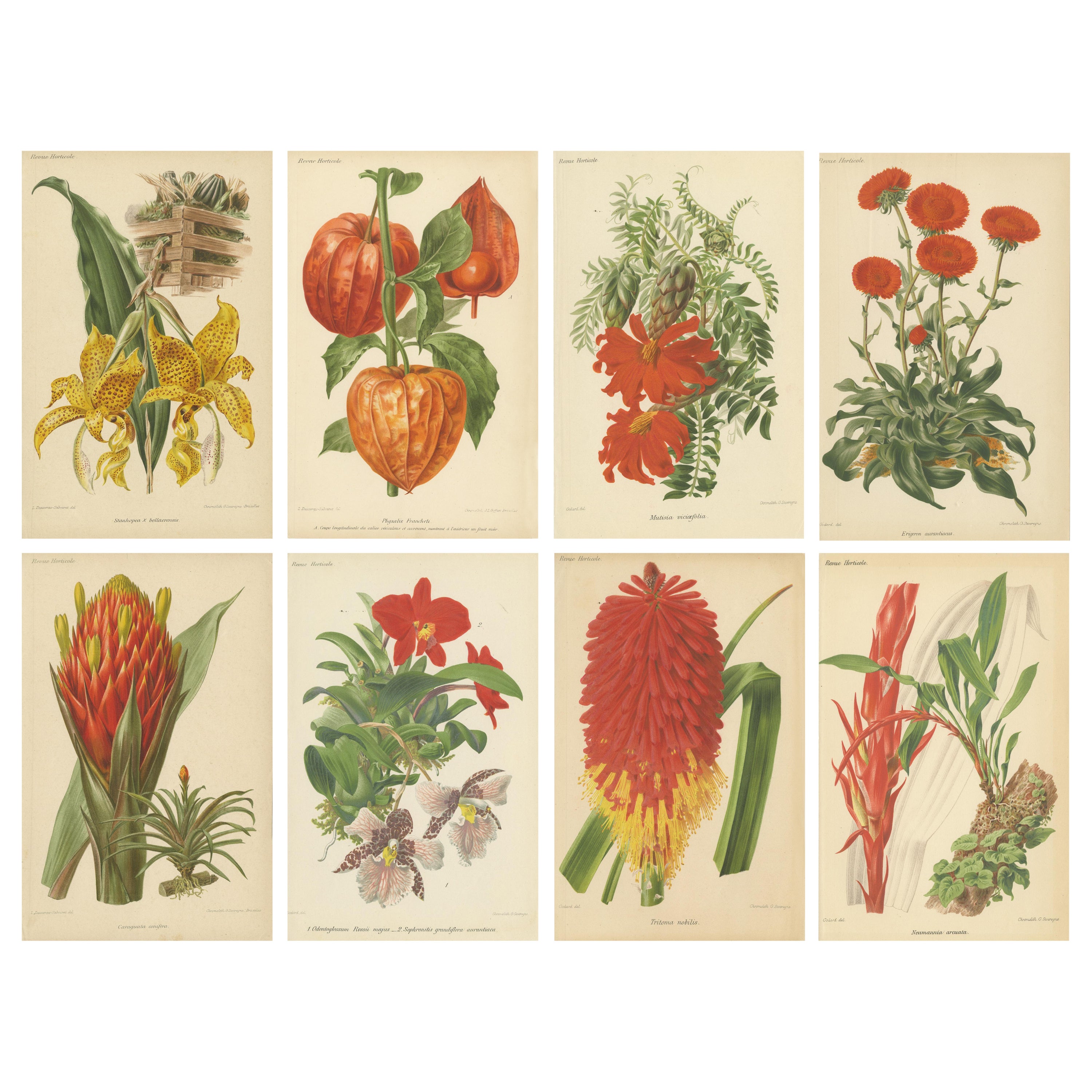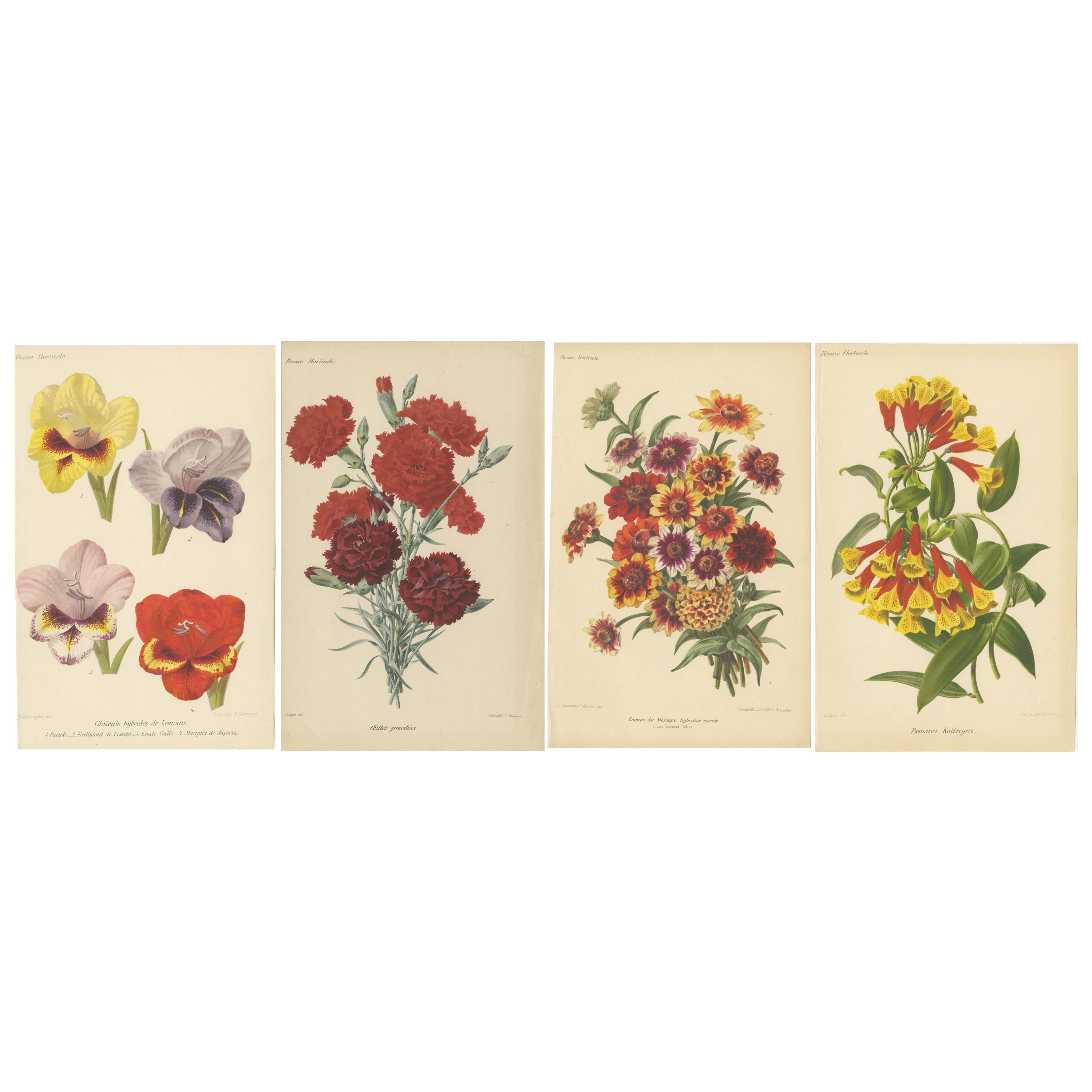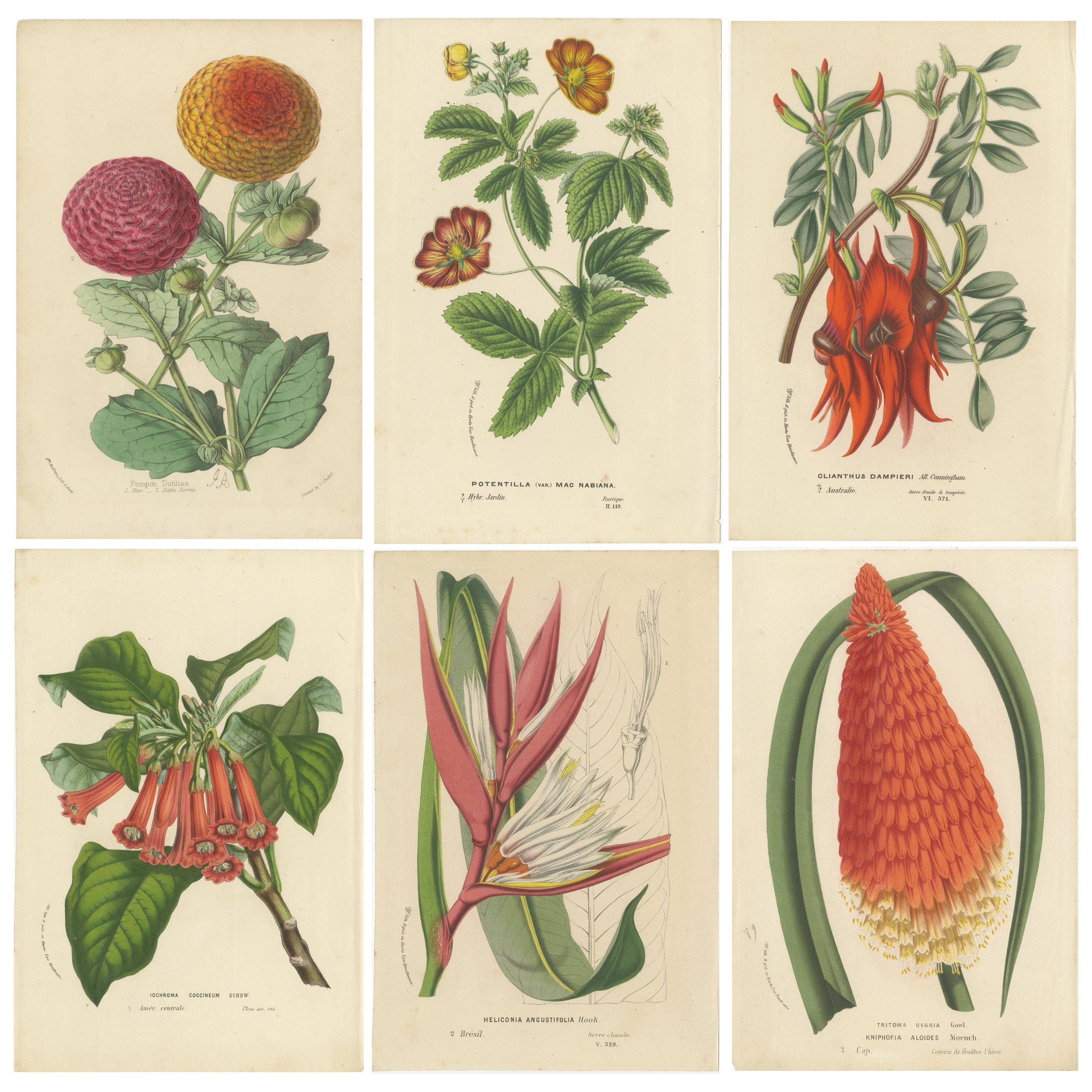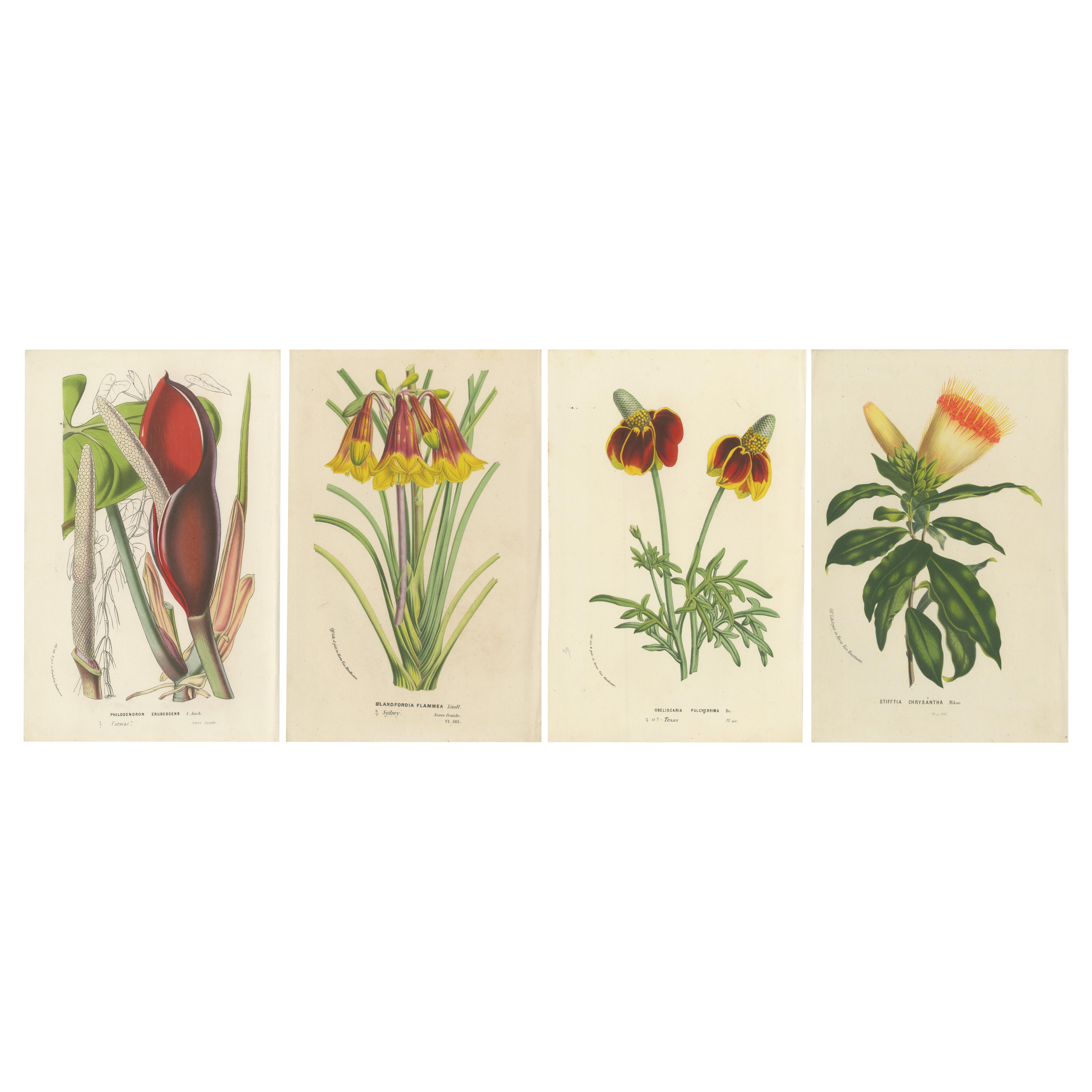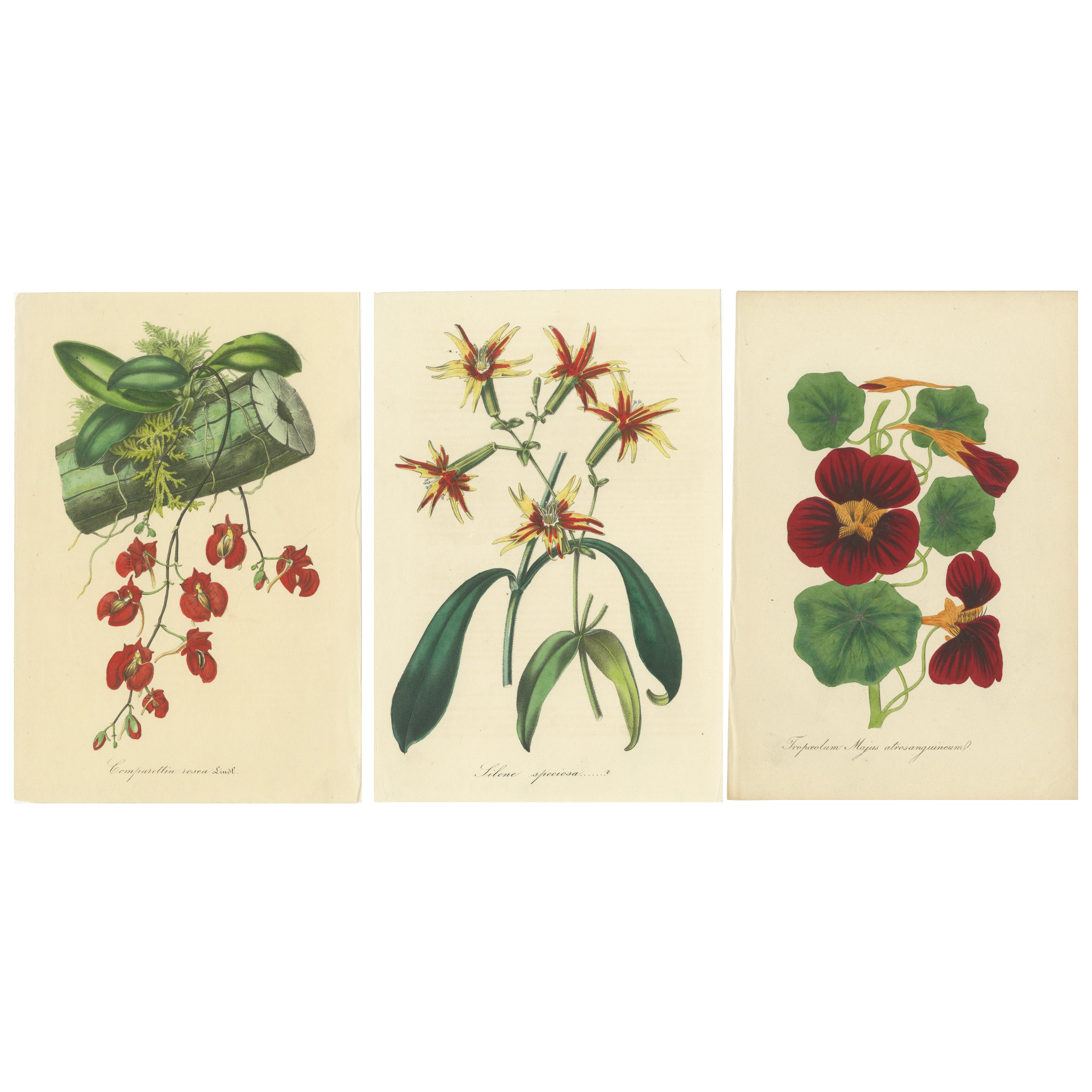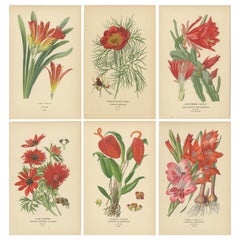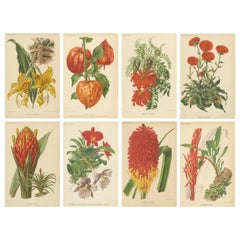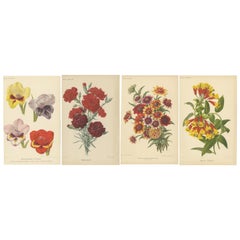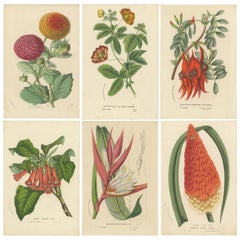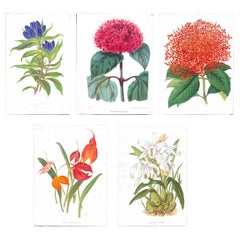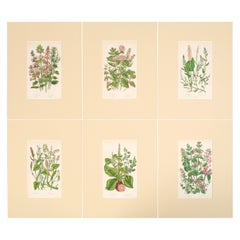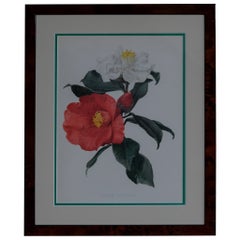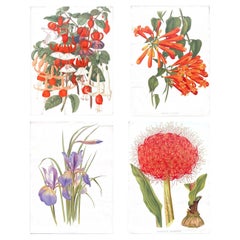Items Similar to Floral Treasures: 19th-Century Chromolithographs from the Botanical Collection
Want more images or videos?
Request additional images or videos from the seller
1 of 8
Floral Treasures: 19th-Century Chromolithographs from the Botanical Collection
$516.51per set
$645.63per set20% Off
£382.37per set
£477.96per set20% Off
€432per set
€540per set20% Off
CA$714.72per set
CA$893.39per set20% Off
A$787.96per set
A$984.95per set20% Off
CHF 412.23per set
CHF 515.29per set20% Off
MX$9,666.77per set
MX$12,083.46per set20% Off
NOK 5,189.21per set
NOK 6,486.51per set20% Off
SEK 4,852.73per set
SEK 6,065.91per set20% Off
DKK 3,290.71per set
DKK 4,113.39per set20% Off
About the Item
The following six chromolithographs are part of a collection published in 1896, created by Désiré Bois and Edward Step. They illustrate botanical subjects with remarkable attention to detail and color, showcasing the popular plants of that era. Chromolithography was a technique that enabled vibrant color reproduction, making it ideal for scientific and artistic representations of plants.
### 1. **Ixia maculata**
- **English Name**: Spotted African Corn Lily
- **Description**: *Ixia maculata* features colorful, star-shaped flowers in shades of yellow, orange, and red. It is native to South Africa and belongs to the Iris family. This flower is often grown for its vibrant display in gardens. Its tubular flowers are arranged in spikes, and they open in sunlight but close in the shade, a trait that fascinated botanists and gardeners alike.
### 2. **Papaver somniferum**
- **English Name**: Opium Poppy
- **Description**: The *Papaver somniferum*, commonly known as the Opium Poppy, is a species known for its large, double-flowered blossoms in shades of red, pink, and white. The distinctive seed capsules of this poppy contain opiates, and its medicinal and intoxicating uses were well known historically. The flower is also a powerful ornamental, grown for its beauty and symbolism.
### 3. **Vallota purpurea**
- **English Name**: Scarborough Lily
- **Description**: *Vallota purpurea*, or the Scarborough Lily, is a bulbous plant with deep red, trumpet-shaped flowers. It was a popular choice for Victorian indoor gardens due to its striking color and ease of growth. Native to South Africa, this flower blooms in summer and adds a dramatic splash of red to garden beds.
### 4. **Helichrysum bracteatum**
- **English Name**: Immortelles (Strawflower)
- **Description**: *Helichrysum bracteatum*, commonly known as Immortelles or Strawflower, is recognized for its paper-like, everlasting blooms. These flowers, in shades of red, yellow, white, and pink, were popular in dried flower arrangements because they retained their color and form even after being dried. Native to Australia, they have since become a staple in ornamental gardens.
### 5. **Cheiranthus cheiri**
- **English Name**: Wallflower
- **Description**: *Cheiranthus cheiri*, or Wallflower, is a charming and fragrant flower, blooming in vibrant clusters of yellow, orange, and red. The plant is known for its hardiness, often found growing in rocky crevices or old walls, giving rise to its common name. Its long flowering season and rich scent made it a favorite in Victorian gardens.
### 6. **Mirabilis jalapa**
- **English Name**: Marvel of Peru (Four O'Clock Flower)
- **Description**: *Mirabilis jalapa*, known as Marvel of Peru or Four O'Clock Flower, is a delightful plant with multicolored blooms that open in the late afternoon, hence its common name. Originating in South America, this plant was beloved for its beauty and its unique characteristic of displaying multiple colors on the same plant.
### About the Makers:
- **Désiré Bois** was a distinguished French botanist and botanical illustrator. His meticulous work brought an artistic precision to botanical studies, combining scientific rigor with aesthetic beauty. His illustrations, often used in scientific publications, were highly regarded for their accuracy and beauty.
- **Edward Step** was an English naturalist and author who contributed to several works on natural history, particularly focusing on plants and flowers. His work often targeted the general public, making botanical knowledge accessible through detailed illustrations and informative text. His publications often featured the collaborative works of talented illustrators like Bois.
### The Publication:
This collection was part of a series published in 1896 that focused on the natural world, particularly plants, and was intended to educate the general public about the beauty and variety of flora. The combination of Step’s clear, educational text and Bois’ exquisite illustrations made this series a valuable resource for both gardening enthusiasts and natural historians.
### Technique: Chromolithography
Chromolithography is a method of making multi-colored prints, which became widely used in the 19th century. It involves using multiple stones, each inked with a different color, to build up an image layer by layer. This process was highly suited to botanical illustrations, as it allowed for the precise reproduction of a plant's natural colors, making the final result both scientifically useful and visually appealing. Chromolithographs were labor-intensive, but their ability to capture the vibrant hues and delicate details of plants made them the ideal medium for this type of artwork.
- Dimensions:Height: 9.45 in (24 cm)Width: 6.11 in (15.5 cm)Depth: 0 in (0.02 mm)
- Sold As:Set of 6
- Materials and Techniques:
- Period:
- Date of Manufacture:1896
- Condition:Condition: Very good, given age. General age-related toning and/or occasional minor defects from handling. Please study scan carefully.
- Seller Location:Langweer, NL
- Reference Number:Seller: BG-13761-92, BG-13761-95, etc1stDibs: LU3054341457502
About the Seller
5.0
Recognized Seller
These prestigious sellers are industry leaders and represent the highest echelon for item quality and design.
Platinum Seller
Premium sellers with a 4.7+ rating and 24-hour response times
Established in 2009
1stDibs seller since 2017
2,609 sales on 1stDibs
Typical response time: <1 hour
- ShippingRetrieving quote...Shipping from: Langweer, Netherlands
- Return Policy
Authenticity Guarantee
In the unlikely event there’s an issue with an item’s authenticity, contact us within 1 year for a full refund. DetailsMoney-Back Guarantee
If your item is not as described, is damaged in transit, or does not arrive, contact us within 7 days for a full refund. Details24-Hour Cancellation
You have a 24-hour grace period in which to reconsider your purchase, with no questions asked.Vetted Professional Sellers
Our world-class sellers must adhere to strict standards for service and quality, maintaining the integrity of our listings.Price-Match Guarantee
If you find that a seller listed the same item for a lower price elsewhere, we’ll match it.Trusted Global Delivery
Our best-in-class carrier network provides specialized shipping options worldwide, including custom delivery.More From This Seller
View AllBotanical Illustrations from the Victorian Era: A Visual Celebration of Flora
Located in Langweer, NL
These are vibrant chromolithographs from "Favourite Flowers of Garden and Greenhouse" by Edward Step, illustrated by Désiré Bois and published in 1896 by Frederick Warne & Co., Londo...
Category
Antique 1870s English Prints
Materials
Paper
$468 Sale Price / set
20% Off
Original Vintage Botanical Illustrations from Revue Horticole, circa 1855
Located in Langweer, NL
Here are descriptions of the eight botanical illustrations, including the Latin and English names of the plants, why they are significant, and details about the creators and the tech...
Category
Antique 1850s Prints
Materials
Paper
$640 Sale Price / set
20% Off
Vibrant Blooms: A Collection of Exquisite Chromolithographs from Revue Horticole
Located in Langweer, NL
These chromolithographs, originally published in the *Revue Horticole*, represent some of the finest examples of 19th-century botanical art, showcasing an exquisite level of detail a...
Category
Antique 1880s Prints
Materials
Paper
$344 Sale Price / set
20% Off
Exotic Blooms: A Collection of 19th-Century Chromolithographs, Published in 1875
Located in Langweer, NL
The following six chromolithographs are botanical prints from a collection illustrated by Louis Benoît Van Houtte.
Louis Benoît Van Houtte was a prominent Belgian horticulturist and...
Category
Antique 1870s Prints
Materials
Paper
$564 Sale Price / set
20% Off
Flora Illustrated: A Collection of 19th Century Botanical Art, Published c.1875
Located in Langweer, NL
The prints depict various botanical species, each illustrated with detailed attention to the morphology of the plants, including leaves, flowers, and sometimes fruits or seeds. These...
Category
Antique 1870s Prints
Materials
Paper
$325 Sale Price / set
20% Off
Vibrant Botanical Chromolithographs: A Showcase of Exotic Blooms, 1875
Located in Langweer, NL
The following botanical prints are from a collection illustrated by Louis Benoît Van Houtte.
Louis Benoît Van Houtte was a prominent Belgian horticulturist and nurseryman. He publis...
Category
Antique 1870s Prints
Materials
Paper
$315 Sale Price / set
20% Off
You May Also Like
Bignonia venusta – Antique Botanical Chromolithograph, 1880s
Located in Fukuoka, JP
A striking original botanical print from the 1880s, featuring Bignonia venusta, also known as flame vine or orange trumpet vine. This brilliantly colored illustration captures the dr...
Category
Antique 19th Century French Prints
Materials
Paper
Set of Six English 19th Century Botanical Engravings, England, C.1880
Located in London, GB
A set of six English 19th century Botanical Engravings, England C.1880.
Mounted, ready to be framed.
Fine examples, in excellent condition commensurate of age.
Category
Antique Late 19th Century English Victorian Prints
Materials
Paper
Botanical Chromolithographs from: William Robinson's Flora & Sylva
Located in Kettering, GB
A collection of 16 original botanical chromolithograph print in colours from William Robinson’s 1903-1905 Flora & Sylva – A Monthly Review....
Category
Early 20th Century British Decorative Art
Materials
Paper
Original 1880s Botanical Print of Hæmanthus Kalbreyeri — Vibrant Antique Chromol
Located in Fukuoka, JP
A striking original chromolithograph from the 1880s, this botanical print features the dramatic Hæmanthus kalbreyeri, also known as the blood lily. Characterized by its intense red s...
Category
Antique 19th Century French Prints
Materials
Paper
Collection of Early 20th Century Framed Botanic Pressed Flowers
Located in London, GB
Collection of Early 20th Century Framed Botanic Pressed Flowers
Six early 20th Century pressed botanic samples date from 1904 to 1907. Each example has a hand written paper descript...
Category
Early 20th Century European Victorian Decorative Art
Materials
Natural Fiber
Victorian Floral Prints from The Museum of Flowers by Mary Elizabeth Rosenberg
Located in Atlanta, GA
English Victorian period floral prints from "The Museum of Flowers" by Mary Elizabeth Rosenberg, circa 1845, in custom giltwood frames under g...
Category
Antique 19th Century English Victorian Prints
Materials
Glass, Paper, Giltwood
